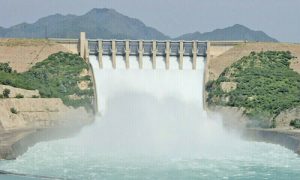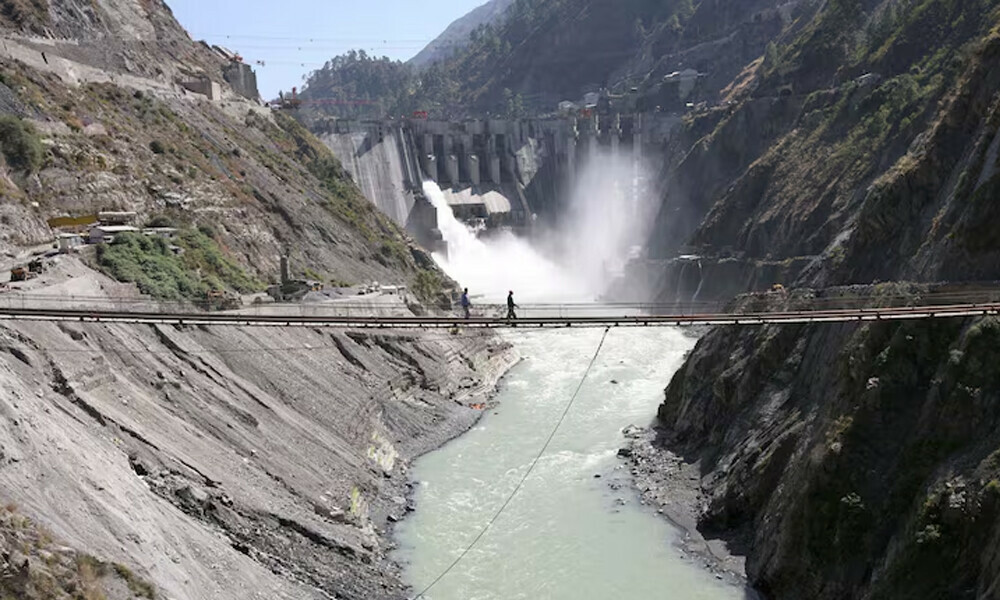SRINAGAR: India has taken a significant step that appears to breach the Indus Waters Treaty (IWT) of 1960. Authorities have started enhancing the reservoir capacity at two hydroelectric projects in the Indian Illegally Occupied Jammu and Kashmir (IIOJK), according to sources who spoke with Reuters.
On Thursday, a “reservoir flushing” process aimed at clearing out sediment was initiated by NHPC Ltd, India’s largest hydropower company, along with the relevant authorities. While the sources indicated that this work might not pose an immediate threat to Pakistan’s water supply, it could have long-term implications.
India decided to suspend the IWT—which guarantees water to 80% of Pakistani farms—following the tragic killing of 26 individuals at the tourist resort of Pahalgam in IIOJK last month. Without presenting any evidence, India accused Pakistan of being behind the attack, which has escalated tensions between the two nations.
Pakistan, denying any involvement in the Pahalgam incident, has warned of potential international legal action regarding the IWT’s suspension, stating that “Any attempt to stop or divert the flow of water belonging to Pakistan … will be considered as an act of war.”
The sources revealed that India did not notify Pakistan about the ongoing work at the Salal and . This is the first time such work has been undertaken since the projects were established in 1987 and 2008-09, respectively, as the IWT had previously prohibited it.

The reservoir flushing process initially leads to sediment-heavy waters being released downstream, which could result in sudden flooding, followed by a decrease in water flow as the reservoirs refill, one of the sources explained.
They mentioned that while the work might not pose an immediate threat to Pakistan’s water supply, it could eventually have an impact if other dams start similar operations. There are over six such projects in the occupied area.
According to one source who spoke to Reuters, the flushing operation lasted for three days starting May 1. “We were also instructed to open the adjustable gates for cleaning, which we did from May 1,” the source explained, noting that the goal was to remove any restrictions on dam operations.
“This is the first time we’ve done something like this, and it will lead to more efficient power generation while also protecting the turbines from damage,” the source added. Locals living along the banks of the Chenab River confirmed that water had been released from both the Salal and Baglihar dams from Thursday to Saturday.
Flushing hydropower projects involves nearly emptying a reservoir to push out sediment, which is a major factor in decreasing output. “Flushing isn’t something we do often because it results in a lot of water waste,” one source remarked.
Two sources indicated that the power output from the 690-megawatt Salal project was significantly below its potential because Pakistan had restricted such flushing, and the silt build-up was also impacting the 900-MW Baglihar project.
“Downstream countries were supposed to be notified in case this caused any flooding,” the source said, explaining that under the Indus Waters Treaty (IWT), India is required to share data on hydrological flows at various points along the rivers that flow through India and issue flood warnings.
Officials and experts from both sides agree that India can’t immediately halt water flows, as the IWT only permits it to construct run-of-river hydropower plants, which don’t need large storage dams, on the three rivers designated for Pakistan.
The suspension of the IWT means India “can now freely pursue our projects,” said Kushvinder Vohra, a recently retired head of India’s Central Water Commission who has worked extensively on the Indus disputes with Pakistan.
For the latest updates and insights on new developments, visit the NEWSON
Q1.What recent action has the Indian government taken regarding the Indus Waters Treaty (IWT)?
The Indian government has initiated reservoir flushing operations at the Salal and Baglihar hydroelectric projects in Jammu and Kashmir. This move, following the suspension of the IWT, aims to enhance reservoir capacity and power generation efficiency. The flushing process began on May 1, releasing sediment-laden water downstream before refilling the reservoirs. While immediate impacts on Pakistan’s water supply are minimal, such actions could have long-term implications.
Q2: How does the “reservoir flushing” process affect Pakistan’s water supply?
Reservoir flushing involves releasing sediment-heavy water from dams to clear accumulated silt, which can temporarily increase water levels downstream. This process, typically requiring prior notification under the IWT, was carried out without informing Pakistan, raising concerns about potential flooding and subsequent reduced water flow as the reservoirs refill.
Q3: Why did New Delhi suspend the Indus Waters Treaty?
New Delhi suspended the IWT following a deadly attack in Pahalgam, Jammu and Kashmir, that resulted in 26 fatalities. India attributed the attack to Pakistan-based militants, leading to heightened tensions and the decision to halt the treaty. Pakistan has denied involvement and views the suspension as a violation of the agreement.
Q4: Was Pakistan informed about the ongoing work at the Salal and Baglihar dams?
No, Pakistan was not notified about the reservoir flushing operations at the Salal and Baglihar dams. This lack of communication is a departure from previous practices under the IWT, where such activities required prior consultation.
Q5: What is the purpose of the “reservoir flushing” process?
The “reservoir flushing” process aims to remove accumulated sediment from dams, improving water storage capacity and preventing turbine damage. While beneficial for power generation, it can lead to temporary water surges downstream, potentially causing flooding, followed by reduced water flow as the reservoirs refill.
Q6: What are the legal implications of halting water flow from hydroelectric projects?
Under the IWT, India is required to share data on hydrological flows and issue flood warnings to downstream countries. Any action that disrupts the water flow could lead to legal action from Pakistan, which has warned that halting or diverting water could be considered an “act of war.”


